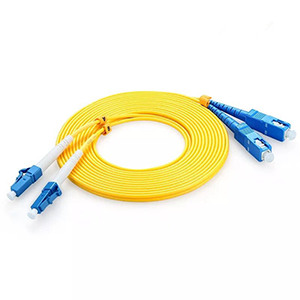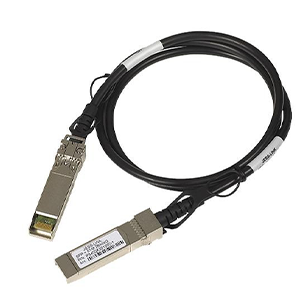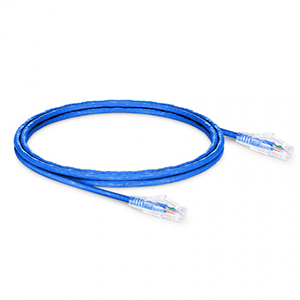As the demand for network access continues to grow, laying Ethernet cables in renovated houses has become an important task. This article will focus on the wiring methods in this scenario. We first evaluate the structure and decoration of the house to understand the requirements of the owner.
Next, we introduce the method of hidden wiring in the wall, including techniques such as grooving/perforation and experience sharing of professional construction workers. Then, we analyze the advantages of wiring inside the ceiling and provide specific operation instructions. Finally, we explore the application scenarios of exposed pipeline wiring, introduce relevant solutions and explain installation tips.
Preparation and factors to consider
In the preparation work before wiring, factors to consider include network requirements, wiring methods and environmental conditions. First, evaluate the required bandwidth and number of devices to select the appropriate cable type. Second, check the space and layout of the wiring area to ensure that the passage is unobstructed. Also consider the material of the wall and floor to determine the best installation method.
When you start installing smart home devices, you need to fully evaluate the existing conditions of the house and the needs of the owner, and make careful preparations, which include the following aspects:
1. Evaluate the structure and decoration of the house:
- Understand the characteristics of the house’s wall material, ceiling design, floor structure, etc.
- These factors will affect the installation method of the equipment and the choice of wiring scheme.
- For example, brick-concrete walls are convenient for grooving wiring in the wall, while wooden frame walls are more suitable for surface wiring.
2. Understand the owner’s requirements for aesthetics and minimal damage:
- Ask the owner about his expectations for the appearance of the equipment and the degree of impact on the decoration during installation.
- Some owners pay more attention to aesthetics and neatness, and hope that the equipment installation can be hidden as much as possible;
- Other owners may pay more attention to functionality and are more tolerant of damage and interference during the installation process.
- Therefore, it is necessary to fully understand the owner’s preferences in order to develop a suitable installation plan.
3. Evaluate the electrical system of the house:
- Check the power capacity and power distribution of the house to ensure that it can meet the power demand of the new equipment.
- If necessary, prepare for circuit modification or capacity expansion in advance.
4. Consider future scalability:
- During the initial planning, space and interfaces should be appropriately reserved to facilitate the addition of new equipment in the future.
- This can avoid large-scale changes due to space constraints in the future.
5. Do a good job of site survey and design:
- Before the actual installation, it is necessary to carefully survey the site environment to determine the best equipment layout and cable direction.
- Develop a detailed installation design drawing to facilitate the subsequent orderly and efficient construction.
In short, before starting to install the smart home system, you need to fully understand the house conditions and the needs of the owner, and make careful preparations to lay the foundation for the subsequent smooth installation.
Methods for hidden wiring in the wall
The method of hidden wiring in the wall includes: First, choose the appropriate type of Ethernet cable, such as Cat6 or Cat7. Then, use the wiring tube or pipe in the wall to ensure that the cable is well protected. Next, mark and cut the wall to install the sockets and channels to ensure neat wiring. After completing the wiring, close the wall and repair it to maintain the appearance.
When wiring smart home devices in renovated houses, using hidden wiring in the wall is a common solution. The main technologies include:
1. Grooving wiring:
- Open a narrow cable groove on the wall surface and embed the wiring cable into it.
- You can use an electric hammer or a special groove tool to operate.
- You need to be extra careful to avoid damaging the wire pipes, water pipes and other pipeline facilities inside the wall.
2. Perforation wiring:
- Drill a hole of appropriate size on the wall and pass the cable through the wall.
- The hole size should be slightly larger than the cable diameter to facilitate the insertion of the cable.
- You also need to be careful to avoid accidental damage to hidden pipeline facilities.
3. Pre-buried pipelines:
- During the decoration construction stage, special cable ducts can be pre-buried in the wall.
- When wiring in the future, you only need to insert the cables into the pre-buried ducts, which greatly reduces the damage to the wall.
- This method can protect the house decoration to the maximum extent.
Professional installation and construction personnel usually follow the following experience and precautions when performing hidden wiring in the wall:
1. Fully survey the wall structure in advance to determine the best route and construction point.
2. Use tools such as pipeline detectors to ensure that the pipeline facilities hidden in the wall will not be damaged.
3. Try to reduce the size of the slots or holes, and take good wall protection measures.
4. Keep the cable routing neat and beautiful, and use auxiliary materials such as cable ducts.
5. After the construction is completed, repair and beautify the grooves or holes.
In short, hidden wiring in the wall requires professional construction technology and rich on-site experience. It is necessary to ensure the functionality of the cable layout and minimize the damage to the interior decoration.
Tips for wiring inside the ceiling
Tips for wiring inside the ceiling include: First, plan the cable path and avoid crossing with other cables to reduce interference. Use appropriate brackets and clamps to fix the cables to ensure neatness and safety. Second, leave enough bending radius to prevent signal attenuation. Regularly check and maintain the wiring to deal with possible losses and failures. In addition, consider installing network sockets in key locations to facilitate device connection and future expansion needs.
When wiring smart home devices in a renovated house, hiding the cables inside the ceiling is a very good choice. This wiring method has the following advantages:
1. Highly concealed:
- Hidden cables inside the ceiling can avoid affecting the beauty of interior decoration.
- Just reserve a few small holes on the ceiling to lead out the cables.
2. Easy to install:
- The ceiling usually has a large space to accommodate cables.
- The cables can be laid and connected through the access port above the ceiling.
3. Protect cables:
- The interior of the ceiling is relatively closed, which can better protect the cables from damage.
- Avoids some damage risks that may be encountered when wiring in the wall.
Specific operation instructions are as follows:
1. Confirm the ceiling structure:
- Understand the material, structure and installation method of the ceiling to determine the best routing path for the cable.
- For metal keels or grid ceilings, you can use their gaps to thread the cables.
2. Cable fixing method:
- Plastic wire clips, metal clamps, etc. can be used to fix the cables above the ceiling.
- Ensure that the cables are laid neatly and beautifully, and will not droop and affect the beauty of the ceiling.
3. Cable lead-out:
- At the location where the device needs to be connected, reserve a small hole on the ceiling to lead out the cable.
- The hole size should be slightly larger than the cable diameter to facilitate the cable to pass through.
4. Cable wiring:
- Try to complete the cable connection and connection inside the ceiling.
- Specialized junction boxes and other accessories can be used to ensure that the joints are firm and reliable.
5. Cable management:
- For multiple cables, they can be organized by bundling or wiring troughs.
- Ensure that the cable layout is neat and orderly without causing entanglement and chaos.
In short, making full use of the internal space of the ceiling for the cable layout of smart home devices is a simple and efficient solution. However, it is still necessary to be extra careful when implementing it, and pay attention to the fixing and beautification of the cables.
Adopting exposed pipeline wiring scheme
When adopting the exposed pipeline wiring scheme, first select the appropriate pipeline trough to accommodate the number and type of cables. During installation, the pipeline trough should be fixed to the wall or ceiling to ensure stability. Keep the cables neat when wiring and avoid crossing. Use cable ties to organize them when necessary. Considering the aesthetics, you can choose a white pipeline trough or one that matches the wall color. In addition, regularly check and maintain the wiring to ensure the stability and security of the network.
In some cases, it is not possible to completely adopt hidden wall or ceiling wiring. At this time, you can consider using exposed pipeline troughs or cable troughs to lay cables for smart home devices. This exposed wiring scheme is usually suitable for the following scenarios:
1. Scenarios that cannot be hidden:
- For example, the house structure cannot accommodate hidden wiring, or the owner does not want to damage the decoration too much.
- Some historical buildings, old houses and other environments that cannot be renovated on a large scale.
2. Meet specific decoration styles:
- For some modern industrial or loft-style decorations, exposed pipes are more coordinated.
- Some owners have a special preference for this, hoping to highlight the aesthetic effect of the cable wiring itself.
For the needs of exposed wiring, the following solutions can be adopted:
1. Pipeline duct:
- Professional cable pipeline duct made of plastic or metal.
- It can be laid along the wall, footing and other locations to form a neat and beautiful cable routing.
- The pipeline duct is available in a variety of colors to coordinate with the interior decoration style.
2. Cable duct:
- Use special cable ducts to neatly arrange the cables.
- The ducts are usually attached to the wall or ceiling to form an integrated wiring solution.
- The ducts are also available in a variety of materials and shapes.
3. Suspended wiring:
- Install metal hooks on the wall or ceiling and hang the cables directly on them.
- This method is simpler and more flexible, but the cable status needs to be checked regularly.
When installing exposed pipeline wiring, pay attention to the following points:
1. Choose pipeline ducts or cable ducts with good quality and beautiful appearance.
2. Ensure that the cables are neatly laid out and the direction of the cables is coordinated with the interior decoration style.
3. Take necessary protective measures to prevent the cables from being damaged or accidentally pulled.
4. For suspended wiring, the cable fixation needs to be checked regularly.
Through the rational use of solutions such as pipeline ducts and cable ducts, even if the wiring cannot be completely hidden, the exposed wiring can be neat and beautiful.
Summary
The laying of Ethernet cables in renovated houses needs to be adapted to local conditions and take into account both aesthetics and functionality. Our company is a well-known network infrastructure supplier in the industry and has long been committed to providing comprehensive wiring solutions. We have rich on-site construction experience and can tailor the best solution for you.
We provide a variety of supporting products such as cables, pipeline ducts, etc. to ensure that you can get high-quality installation services and products. At the same time, our engineering team will provide professional guidance throughout the process to ensure that the deployed network cabling solution can meet your actual needs to the greatest extent. Contact us now to learn more.
FAQ on laying Ethernet cables in completed homes
Yes, you can run Ethernet cable in a finished house with proper techniques and tools.
You’ll need a drill, fish tape, a drywall saw, a cable stapler, and possibly a measuring tape.
Identify the shortest and least obstructed path from your router to the desired outlet location.
Yes, always use in-wall rated cables (CM, CL2, or CL3) to comply with safety codes.
Use fish tape to guide the Ethernet cable through walls and ceilings; start from one end and pull it through.
Drill a hole using a suitable bit and feed the cable through, ensuring you avoid any existing wiring or plumbing.
Yes, you can run the cable along baseboards or use surface-mounted raceways for a cleaner look.
Use a keystone jack or wall plate, following the T568A or T568B wiring standards for termination.
Turn off power to nearby electrical outlets, and avoid drilling into walls without checking for hidden wires.
Yes, always check local building codes and regulations to ensure compliance with electrical standards.




